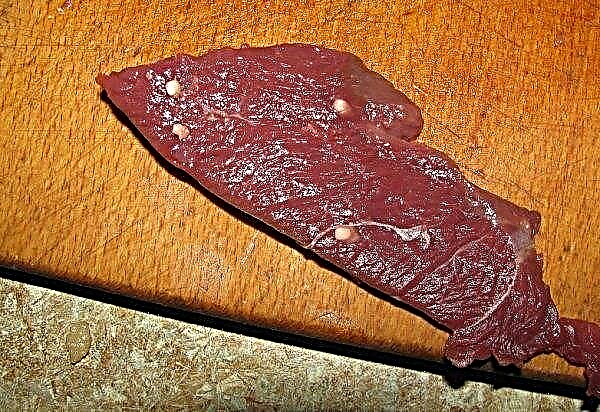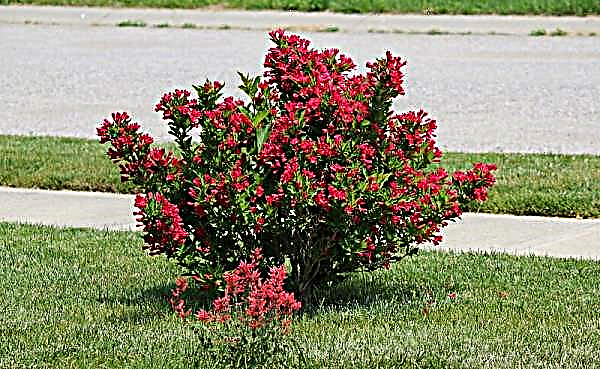Potatoes are today the most popular root crops grown everywhere. The traditional method of cultivating this vegetable is considered to be its landing in the ground, however, some summer residents practice the old method - planting under straw. What are the features and advantages of this method, let's figure it out.
Potato planting time under straw
In recent years, planting potatoes under straw has become increasingly popular, as it has a number of key advantages, among which are:
- high environmental friendliness of the method;
- lack of need of digging of soil and an earthing up of bushes;
- Significant simplification of the processes of planting fruits, caring for them and harvesting;
- fairly high yields.

Early planting makes it possible to save on soil moisture during the growing season and create comfortable conditions for the growth of the root system. The only problem with early planting is the risk of night frosts returning, which can have a negative impact on the condition of root crops. But it is easy to prevent, if you cover the planting with special agrofibre or any non-woven material.
Important! If potato planting events are held in late spring, then the garden should be well moistened.
Selection and preparation of tubers and plot
Before planting potatoes, you should first of all take care of choosing the most optimal site and selecting quality seed. As the latter, medium-sized root crops (the size of a chicken egg) that do not have damage, rot, signs of the disease are best suited. Large fruits are also allowed to be planted, having previously been cut in half.
Seeds need to be warmed up well in the sun, as a result of which they will let out small sprouts, which will significantly increase the amount of future crops. To protect root crops from slugs, they can be treated with wood ash.
To get a good harvest before planting, carefully prepare the site:
- To create comfortable conditions for the development and aeration of the plant, it is necessary to loosen the soil.
- Tubers should be planted in moist soil. If the soil is dry, it is recommended to pre-irrigate it with a hose.
- Soil should be flavored with a small amount of organic products or wood ash.
- After planting, planting material must be covered with straw in a small layer so that it has the ability to “breathe”.
Experts recommend preparing a site for potatoes since the fall - for this, siderates are sown on the bed, which will allow weeds to be squeezed out of the soil, saturate the soil with phosphorus, nitrogen and other valuable components. Among the siderates, it is preferable to choose rye, mustard, oats or alfalfa. They are sown in the fall, and in the spring, 2 weeks before planting, mow the planting, and the stems are dug into the ground.
As a covering material, you can take hay, straw or dry lawn grass. The main thing is that the shelter is dry, without rot and a musty smell.
Video: Planting potatoes on straw
Ways and technology landing
There are several ways that describe how to plant potatoes under straw, but I would like to focus on the two most simple and convenient.
Classical
Most often, for planting potatoes under hay or straw, gardeners use the classical method, which is based on the following steps:
- Loosen and moisten the prepared area.
- Make small grooves in the soil with a depth of not more than 8 cm.
- Place potatoes in each hole, in increments of 30 cm. The spacing between the rows should be about 70 cm.
- Around each root crop, scatter 1 tbsp. l wood ash, which will enrich the plant with potassium.
- Lay the prepared mulch (straw or hay) on top of the holes with a layer of 20–25 cm. In this case, the layer of mulch on the potato should be slightly thicker than between root crops.
Did you know? The homeland of potatoes is considered South America. It was first grown 4000 years ago by the Indians of Peru: they managed to breed more than a hundred varieties of culture.
One of the main disadvantages of the method are:
- the need for a large volume of mulch when planting root crops in large areas;
- there is a chance of rodents in the straw or hay.

Alternative
Large potatoes can be grown if an alternative method is used during planting. Its main difference from the classic one is that root crops are sprinkled with soil.
Before planting, the tubers need to be germinated in a warm place for several weeks. Immediately before laying them in the ground, it is recommended to treat the fruits with a weak solution of potassium permanganate, which will protect them from pests and possible ailments.Important! With this method, steps such as soil preparation and loosening are skipped.
Landing work by an alternative method is carried out according to the following algorithm:
- Form holes in the bed up to 8 cm deep.
- Plant potatoes at a distance of 30 cm from each other, between rows - 60 cm.
- Sprinkle holes with root crops with a small layer of soil.
- Cover the bed with a 25 cm layer of mulch.
- All fruits in the ground must be placed very carefully, sprouts up.

Cultivation and care
It is convenient to grow root crops under the straw because this method does not require further hilling and weeding of weeds.
Nevertheless, it is still necessary to organize competent nursing landings. And for this it is necessary to carry out such actions:
- When the sprouts of early potatoes reach a height of 15–20 cm, a small mound should be made around them, which will protect root crops from the negative effects of sunlight. A similar procedure allows you to replace the hilling.
- During the development of tubers, you need to regularly add mulch. This will make it possible to retain moisture in the soil and contribute to the formation of beautiful tubers of the same shape.
- During a drought, potatoes should be regularly watered once a week. When moistening the soil, you need to make sure that water does not fall on the foliage and stalk. Watering is recommended to be carried out exclusively under the root.
- It is important to do a regular visual inspection of the landing for pests, in particular Colorado beetles.
- From the moment of intensive growth of seedlings, every 10 days it is necessary to treat the beds with humic fertilizer in liquid form (dissolve 50 ml of the drug in 10 l of water). Such treatment will completely prevent the development of various ailments, in particular late blight.
Did you know? There are many varieties of potatoes, root crops of white or yellow colors are considered traditional. However, there are fruits of black (due to the high content of manganese), red (with a high content of anticyans) and even blue.
You do not need to carry out any potato care procedures before harvesting. 12-14 weeks after planting, the crop is ready for harvest. As a rule, forks are used to dig out fruits planted by an alternative method, but in the classic planting, potatoes are harvested manually, after removing the mulch layer.
The most optimal way to quickly and without unnecessary physical costs to get a rich harvest of large potatoes is to use the method of planting root crops under straw. This technology is absolutely harmless and simple, it can significantly reduce the load on gardeners and free them from many stages of plant care. The only thing to remember is that for successful breeding and obtaining high yields, moist and fairly loose soil is required.













